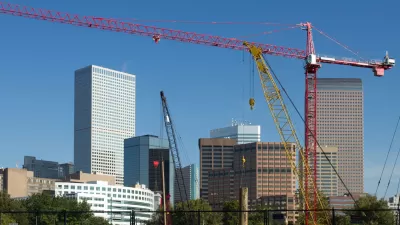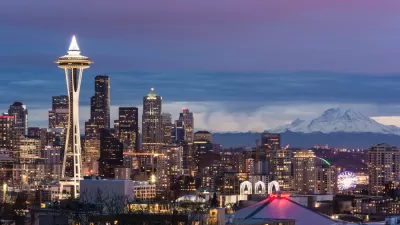Rates of growth in America's largest cities increased dramatically in 2010 but have leveled off. Suburbs are growing at nearly identical rates to center cities.

America's urban resurgence is palpable and real, certainly over the past five years. But stories about adaptive reuse and new restaurants aren't the same thing as cold, hard facts.
The Brookings Institution has crunched numbers on the past five years of U.S. Census data to conclude that the early 2010s were good years indeed for city growth, as center cities in metro areas with populations of 1 million or more grew at 1 percent per year from 2010 through 2014. Growth rates have leveled off, however, with 53 out of the country's 81 largest cities experiencing flat growth in 2014. Demographers debate whether these numbers reflect a genuine resurgent interest in urban living or whether young adults who had been living with parents have simply returned to the rental market.
The death of suburbs seems to have been prematurely announced. Suburban growth rates have slightly lagged those of their respective center cities, but rates evened up in 2014.
Of course, trends do not apply to all cities evenly. Regional distinctions are stark.
"One clue about why the slowdown is occurring can be gleaned from a look at the cities that are growing fastest. The six fastest-growing big cities include Austin, Texas; Orlando, Fla.; Durham, N.C.; Henderson, Nevada; Denver, Colo.; and Fort Worth, Texas, and each showed a recent uptick in its growth rate. These cities are located in Texas, the Southeast, and the Mountain West—Sunbelt regions that have experienced a recent re-emergence of growth that had stalled during the 2007-2009 recession and the immediate post-recession years."
FULL STORY: New Census data: Selective city slowdowns and the city-suburb growth gap

Planetizen Federal Action Tracker
A weekly monitor of how Trump’s orders and actions are impacting planners and planning in America.

Chicago’s Ghost Rails
Just beneath the surface of the modern city lie the remnants of its expansive early 20th-century streetcar system.

San Antonio and Austin are Fusing Into one Massive Megaregion
The region spanning the two central Texas cities is growing fast, posing challenges for local infrastructure and water supplies.

Since Zion's Shuttles Went Electric “The Smog is Gone”
Visitors to Zion National Park can enjoy the canyon via the nation’s first fully electric park shuttle system.

Trump Distributing DOT Safety Funds at 1/10 Rate of Biden
Funds for Safe Streets and other transportation safety and equity programs are being held up by administrative reviews and conflicts with the Trump administration’s priorities.

German Cities Subsidize Taxis for Women Amid Wave of Violence
Free or low-cost taxi rides can help women navigate cities more safely, but critics say the programs don't address the root causes of violence against women.
Urban Design for Planners 1: Software Tools
This six-course series explores essential urban design concepts using open source software and equips planners with the tools they need to participate fully in the urban design process.
Planning for Universal Design
Learn the tools for implementing Universal Design in planning regulations.
planning NEXT
Appalachian Highlands Housing Partners
Mpact (founded as Rail~Volution)
City of Camden Redevelopment Agency
City of Astoria
City of Portland
City of Laramie



























